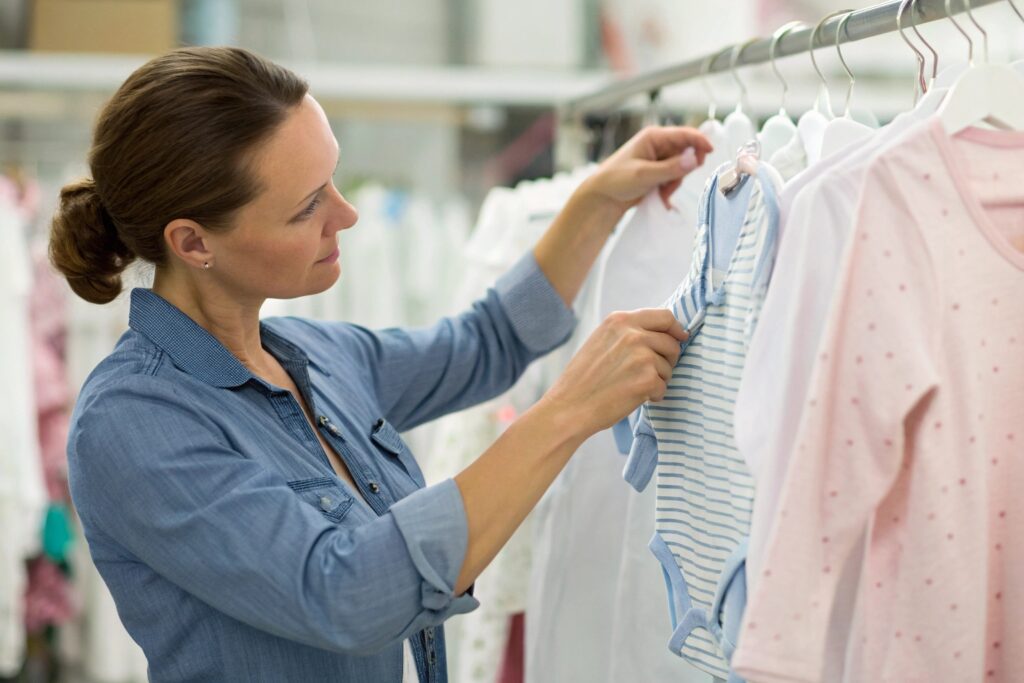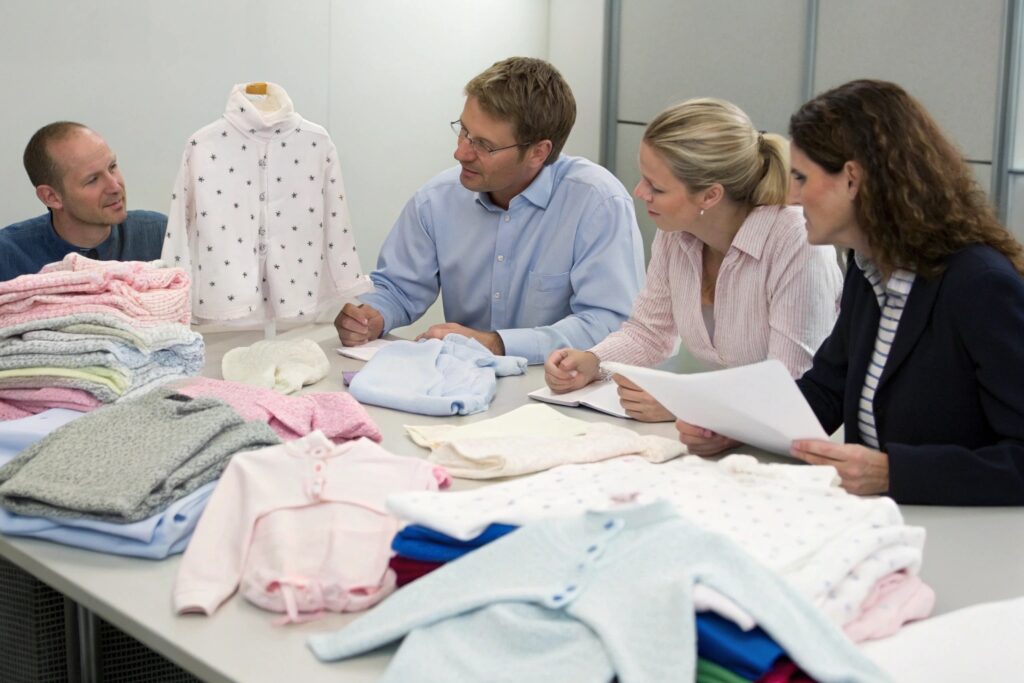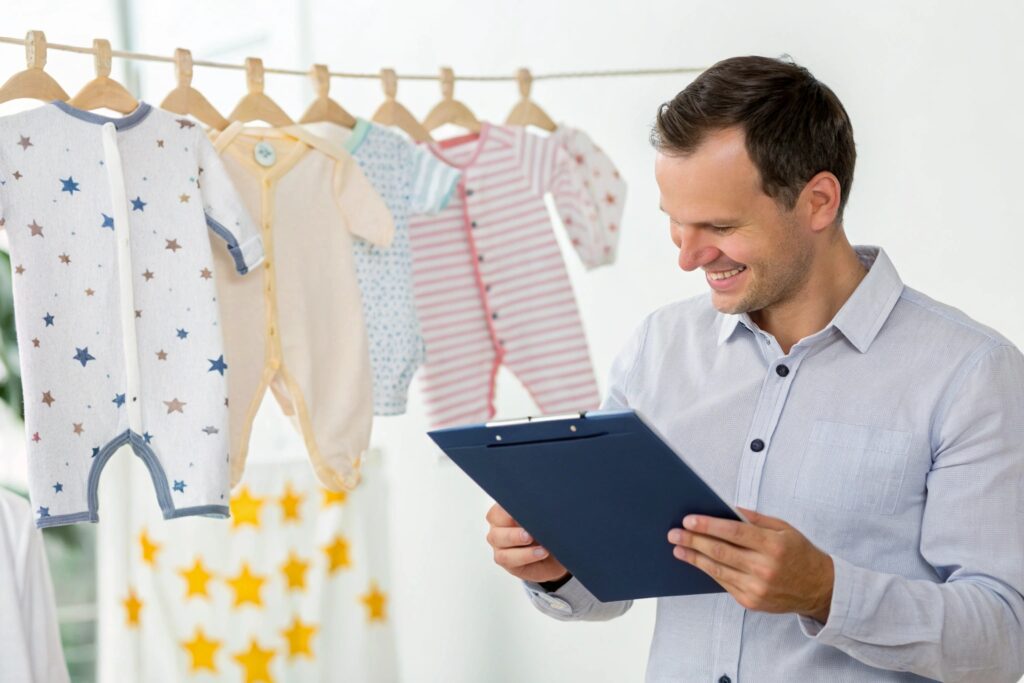In babywear, safety and softness come first—because your customers aren’t just buying clothes, they’re buying peace of mind.
Quality control in baby apparel must be built into every step of production, not left until the end. Small mistakes can become major risks in infant clothing.
In this guide, I’ll explain why quality control matters so much in babywear, and how we at Fumao help brands protect their reputation—and their customers.
How Poor QC Can Lead to Safety Risks in Babywear?
Most parents assume baby clothes are always safe. But even small defects—like a loose snap or rough seam—can lead to serious issues.
Without strong quality control, babywear can pose choking hazards, skin irritation, or other safety risks that damage a brand’s reputation and consumer trust.

What are the most common safety issues from poor QC?
Here are real risks that can occur when QC is skipped or rushed:
| Defect Type | Risk for Baby |
|---|---|
| Loose snaps or buttons | Choking hazard if detached |
| Sharp seams or overlock edges | Skin scratching or rashes |
| Poor label placement | Neck irritation or allergic reactions |
| Incorrect size grading | Poor fit can restrict movement or breathing |
| Bleeding or toxic dyes | Skin reactions or harmful chemical exposure |
At Fumao, we’ve seen how one missed QC step can lead to product recalls—especially in the U.S. where CPSIA compliance is enforced. That’s why we check every stage.
What’s the long-term damage of a single safety failure?
- Product recalls that cost thousands in freight, refunds, and legal fees
- Negative reviews that destroy brand credibility
- Retail rejections from stores requiring documented QC
- Loss of repeat customers—especially among cautious parents
Babywear buyers will not give a second chance if their first order fails to meet quality expectations.
What Brands Should Check Before Bulk Production Ships?
A final inspection isn’t enough. Babywear brands must set clear QC standards before bulk begins—and inspect samples during production.
Before shipping babywear in bulk, brands should verify materials, stitching, trims, sizing, safety labels, packaging, and compliance documents.

What is a pre-shipment quality control checklist for babywear?
We use this 7-step checklist at Fumao before every bulk shipment:
| QC Category | What We Check |
|---|---|
| Fabric & Color | Color matching, shrinkage, softness |
| Stitching & Finishing | Seams, hems, threads, neckline integrity |
| Trims | Snap strength, zipper safety, logo tag stitching |
| Sizing & Grading | Measurements across all SKUs |
| Label & Packaging | Care labels, tracking labels, size tags, box specs |
| Safety & Compliance | CPSIA tracking, OEKO-TEX® / GOTS certs |
| Overall Appearance | No stains, puckering, holes, or wrinkles |
We send photo or video reports for every order—including packaging inspection—before it leaves our factory.
What should brands request from their manufacturer before approving shipment?
Always ask for:
- Final sample from bulk production, not just a pre-production piece
- Size set photos to confirm consistency across the range
- Snap/button strength test video
- Label placement review
- Packing and folding method proof
- Compliance documents and batch reports
Clear expectations + visual proof = fewer mistakes, fewer returns, and more trust.
Key Quality Control Standards in Infant Clothing?
Infantwear isn’t just smaller clothing—it’s governed by stricter safety and product standards around the world.
Babywear must meet local regulations like CPSIA (U.S.), EN 14682 (EU), and OEKO-TEX® safety testing to pass inspections and protect children.

What standards apply to baby apparel QC in the U.S. and Europe?
Here are the key frameworks we follow at Fumao:
| Standard | Applies To |
|---|---|
| CPSIA (U.S.) | Tracking labels, lead content, flammability |
| 16 CFR 1501 | No small removable parts for under-3s |
| OEKO-TEX® Standard 100 | Non-toxic fabric and dye safety |
| EN 14682 (EU) | No cords or ties in baby clothing |
| ASTM F1816 (snap durability) | Snap strength test for infantwear |
Each of these protects the baby from harm. We run internal tests like seam pull tests and color fastness to ensure compliance—especially for bulk orders heading to the U.S. or EU.
What testing methods ensure babywear safety?
Our team conducts:
- Button/Snap pull tests using snap-testing machines
- Seam strength tests for stress-prone areas (neck, bottom)
- Color fastness under saliva and washing conditions
- Shrinkage tests in hot/cold wash
- Softness tests via brushing standards or manual checks
Results are documented in your QC file and shared before shipping. This keeps your brand safe and compliant from the first delivery.
How Consistent QC Builds Trust with Parents and Buyers?
Babywear is an emotional product. Parents remember how a garment feels, fits, and lasts—and they tell others.
Reliable quality control earns buyer trust, reduces return rates, improves reviews, and builds long-term loyalty from both parents and wholesale clients.

How does quality affect customer perception?
Customers don’t just look at cuteness—they feel for:
- Softness after washing
- No loose threads or scratchy seams
- Easy diaper access, smooth zippers
- Safe and secure closures
- Clear labels and proper sizing
If they love the first order, they come back for more—especially in babywear, where repeat purchases happen every 2–3 months as babies grow.
We’ve seen brands increase 5-star reviews by 30% after adding one mid-line QC stage and switching to OEKO-TEX® trims.
How does QC help brands scale wholesale and retail partnerships?
Buyers and retailers look for:
- Low return rates and consistent sizing
- Certifications and factory QC reports
- Few customer complaints after first shipment
- On-time delivery with perfect packaging
When we support brands at Fumao, we help them keep wholesale partners happy by offering:
- Consistent lot quality across styles
- Detailed bulk QC reports for each PO
- Pre-shipment checklist confirmation
- Custom packaging QC to match retail standards
This builds trust with B2B buyers—especially in the U.S. and Europe, where consistency is key to retail success.
Conclusion
In babywear, quality control is not optional. It’s the foundation of safety, trust, and brand growth. With the right QC process, you protect babies, satisfy parents, and win long-term loyalty.










